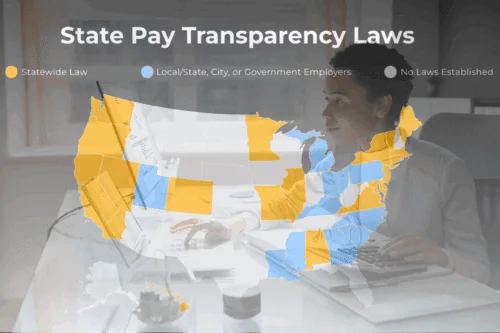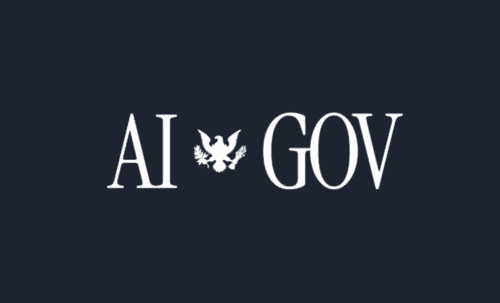Welcome to our comprehensive guide to understanding a tight labor market! If you’re stepping into the job market for the first time or looking to maneuver through changing employment landscapes, this guide is tailored for you. The tight labor market presents many opportunities and challenges, and navigating these can lead you to success. Here, you’ll find everything you need to understand what a tight labor market means, how it affects businesses and workers, and how to make the most of this economic environment. Let’s dive in and explore the possibilities together!
Understanding the Tight Labor Market Meaning
What exactly is a tight labor market? This term is necessary for understanding how economies function and impact workers and businesses. A tight labor market occurs when the demand for labor significantly exceeds the supply. This scenario often results in fewer unemployed workers and more job openings than can be filled.
Key Characteristics of a Tight Labor Market
In a tight labor market, several distinctive features are apparent:
- Low Unemployment Rates: A hallmark of this market is unusually low unemployment, indicating most people who want to work can find employment.
- Increased Wages: Employers often raise wages to attract and retain employees, making jobs more lucrative for workers.
- More Job Openings: Businesses struggle to fill positions, leading to an abundance of available jobs.
- Skilled Worker Shortage: Specific industries may experience acute shortages, pushing companies to invest in training and retention strategies.
Economic Effects
A tight labor market influences the economy in several ways:
- Economic Growth: With more people employed, consumer spending usually increases, driving economic growth.
- Inflation: Wage increases can lead to higher costs for goods and services, potentially causing inflation.
The tight labor market revolves around high demand and low supply of workers, influencing economic and individual business dynamics. For further reading on labor dynamics, visit the U.S. Bureau of Labor Statistics.
Factors Driving a Tight Labor Market
Several factors contribute to the development of a tight labor market. Understanding these can help stakeholders anticipate challenges and opportunities.
Economic Growth
Strong economic expansion often leads to job creation, reducing the pool of available workers. Technological advancements, increases in consumer spending, or governmental fiscal policies can spur this growth.
Demographic Changes
Demographic shifts significantly impact labor markets. An aging population can result in a shrinking workforce, particularly when retirement rates outpace the entrance of younger workers into the job market.
Immigration Policies
Changes in immigration laws can also affect labor availability. Restrictive immigration policies may lead to labor shortages, especially in industries reliant on immigrant workers.
Education and Skill Levels
The discrepancy between job seekers’ skills and those demanded by employers can exacerbate labor market tightness. Rapid technological changes often increase the need for advanced technical skills, highlighting the importance of education and continuous learning.
Understanding changes in the workforce can also be seen in how businesses react. These driving factors highlight the complexity of labor markets and the necessity for strategic planning in policy and business operations. Additional resources and data can be accessed through the U.S. Census Bureau for demographic research and the Department of Labor for policy impacts.
Impacts of a Tight Labor Market on Employment
Understanding the impacts of a tight labor market can help employers and job seekers navigate the opportunities and challenges they face.
Wage Increases
In a tight labor market, businesses often raise wages to attract and retain needed talent.
Employment Opportunities
Job seekers usually find more opportunities with better benefits and flexibility.
Job Security
Workers experience increased job security as companies strive to retain their workforce in a competitive market.
Shift in Skills Requirements
Employers may lower their requirements or provide more on-the-job training to fill positions. Consequently, job seekers may need to adapt quickly to new roles.
Similarly, the changes in government policies impact employment conditions as well.
For a deeper exploration of economic theories behind employment trends, the Federal Reserve provides extensive resources.
Overall, the tight labor market offers various advantages for workers but also creates dynamic challenges for employers, demanding innovative workforce solutions.
How Businesses Respond to Tight Labor Markets
Companies must adapt their strategies to thrive in a tight labor market. Here are several responses businesses may employ:
Innovative Recruitment Strategies
Businesses often enhance their recruitment methods, utilizing social media and engaging recruitment agencies to widen their talent search.
Improving Employee Benefits
Companies might offer more attractive benefits packages to attract and retain employees, including flexible working conditions, health benefits, and higher pensions.
Investing in Employee Training
Organizations may invest more in training to broaden the skill set of existing employees, making it easier to fill roles internally.
Adopting Automation
Some sectors may turn to automation to mitigate the impacts of labor shortages, maintaining productivity with fewer workers.
By adapting these strategies, businesses can better manage the challenges of a tight labor market. Companies seeking to understand technological advancements in automation can explore resources available at the National Institute of Standards and Technology.
Government Policies Influencing Labor Market Dynamics
Government actions can significantly impact the tightness of labor markets. Here’s how policy decisions play a role:
Immigration Reform
Changes in immigration law can increase or decrease the supply of workers, influencing labor market tightness.
Education and Training Initiatives
Government-funded programs to upskill the workforce can help close the skills gap, affecting the labor supply.
Tax Policies
Tax incentives for businesses can encourage hiring, potentially easing tight labor conditions.
Minimum Wage Adjustments
Increasing minimum wage levels can attract more people into the workforce, altering employment dynamics.
Depending on their direction and focus, these policies can either tighten or relax the labor market. Are you interested in more governmental influences on markets? Visit the Government Information Office for policy documents and updates.
Case Studies: Tight Labor Markets Across Different Sectors
Different industries experience the effects of a tight labor market uniquely. Here are some illustrative case studies:
Technology Sector
High demand for tech skills has led to substantial wage increases and aggressive recruitment tactics, including poaching talent.
Healthcare Sector
The aging population has created a persistent demand for healthcare professionals, leading to staff shortages and increased overtime. Visit the World Health Organization to explore more healthcare dynamics.
Retail Sector
Retailers are turning to automation and flexible work schedules to attract and retain employees during labor shortages.
Strategies for Job Seekers in a Tight Labor Market
Job seekers can employ various strategies to capitalize on the benefits of a tight labor market. Here are practical approaches:
Enhancing Skills and Qualifications
Continuous learning and upskilling can make candidates more attractive in a competitive job market.
Networking
Building a strong professional network can lead to more job opportunities through referrals and insider information.
Negotiating Salaries and Benefits
Job seekers should leverage the high demand for their skills to negotiate better pay and benefits.
Exploring Flexible Work Options
Considering roles offering remote work or flexible hours can broaden job possibilities and appeal.
These strategies can significantly enhance job seekers’ chances in a tight labor market. Additionally, the CareerOneStop, sponsored by the U.S. Department of Labor, provides resources for training and job searching.
FAQs
To deepen your understanding, here are some frequently asked questions about the tight labor market.
What is a tight labor market?
A tight labor market occurs when job vacancies are high and the supply of workers is low.
How does a tight labor market affect wages?
Typically, wages increase as businesses compete to attract and retain employees.
Can a tight labor market lead to inflation?
Yes, as wages rise, the cost of goods and services may also increase, contributing to inflation.
What strategies can businesses use in a tight labor market?
Businesses might enhance benefits, increase wages, or adopt automation to cope with worker shortages.
What should job seekers do in a tight labor market?
Job seekers should boost their skills, expand their networks, and negotiate effectively to seize the best opportunities.
Review our analysis of economic impact on jobs for more details on how economic changes affect employment.
The Official Guide to Government Information and Services offers helpful resources for additional government-related information.
Conclusion
The tight labor market presents unique challenges and opportunities for employers and job seekers. Companies need innovative strategies to attract and retain talent, while job seekers can significantly improve their employment terms. It’s a dynamic environment that requires adaptability and proactive engagement.
Take Action
If you’re seeking to navigate this competitive landscape as an employer or a job candidate, join Diversity Employment and upload your resume today! Here, you can access many resources, network with like-minded professionals, and discover opportunities that align with your diverse needs and aspirations. Embrace the possibilities and make your mark in a tight labor market today!




